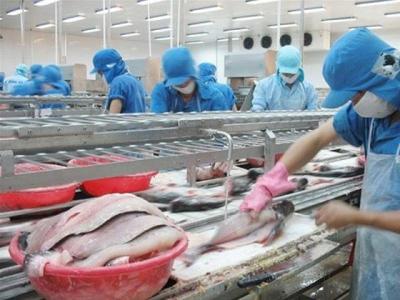Responses to incorrect and defamatory information on tra fish bred in the Cuu Long (Mekong)

Due to incorrect and defamatory information on tra fish bred in the Cuu Long (Mekong) River broadcast on Spanish commercial television channel Cuatro, from the beginning of the month of February 2017, a number of EU retail systems announced to stop selling fish products. Therefore, the Vietnam Association of Seafood Producers and Exporters (VASEP) and many organizations have reacted to this fabricated information, affecting Vietnam tra fish.
Tra fish processing
Vietnamese tra fish products
According to Truong Dinh Hoe- VASEP General Secretary, in May 1-2017, catfish reports on the "En el punto de mira" a 360º panorama news programbroadcast on SpanishCuatro TV station (channel 4),from July 2016 which focused on investigative reports of social-economic issues. The topic of the program wasabout fish breding, trading and online crimes. The program broadcast incorrect and infamatory information about tra fish bred in Cửu Long (Mekong) river.
However, it is noteworthy that in an interview in this program, Linh Nguyễn- official from the Sustainable Fisheries Partnership agencies (SFP) Vietnam, gave inaccurate information about sanitary conditions and water quality in the Mekong river and fish products in Vietnam which hurtVietnamese fish image.
Basically, the program concluded some key points to answer the question about the selling price of tra fish such as: breeding in large quanity; cheap and low quality aquaculture feed with raw materials from rotten and dead fish; lack of control in Aquaculture farms; easier and cheaper Transportation to Spain. They recomended that each person shoud not eat tra fish more than twice per month.
According to Truong Dinh Hoe, right after the broadcast of the above-mentioned report, from early February 2017, a number of EU retail chains announced they would stop selling fish products from Vietnam in all stores fearing negative impact on the environment of fish farms.
After receiving information about the Cuatro report, VASEP sent a response to the local media to confirm that the images and information on the film was totally misleading, stressing that Vietnam’s tra fish production was hygenic and safe to consume.
At the same time,VASEP also proposed the Ministry of Agriculture and Rural Development to have timely directions to limit the negative effects of the footage of fish consumption in Europe in particular and in the world in general, as well as to limit the recurrence of similar incidents in the future.
The Ministry of Agriculture and Rural Development steered to clarify the role and involvement of SFP as well as Mr.Linh Nguyen in the report and require both SFP and Mr. Linh Nguyen to implement timely actions to correct misleading information whichhurt Vietnam catfish industry.
Protests by international and domestic organisations
According to VASEP, before negative information around Vietnam fish raising practices, the international certification body of quality and environment in aquaculture industry disapproved decisions of European retailers to stop selling Vietnam tra fish. The Council of Aquaculture Management (ASC) issued a press release in response to wrong informationthat a few retailers in Europe had decided to stop selling Vietnam catfish. The agency confirmed that the tra fish industry in Viet Nam has improved its production process and quality management. It has also improved its management of environmental impact as well as ensuring clear origins of seafood material, especially in the supply chain comprising breed suppliers, feed factories, fish farms and processing factories. The final products are stored in modern freezing warehouses before being exported to international markets.
The representative of ASC revealed thatmany fish farms have acquired international certification for good raising practices including Best Aquaculture Practices (BAP) and Global Gap. In order to obtain this recognition, the fish farms have to be built and operate strictly on criteria of quality, origin traceability and social responsibility.These farms are asked to regularly measure different water parameters including nitrogen , phosphorus, and oxygen levels to ensure these parameters remained within the limits set for optimal growing conditions. The strict order must also be accompanied in order to ensure that wastewater does not pollute the ecosystem. The farms must also comply with stringent requirements to minimize diseases such not using antibiotics unless absolutely necessary and under the supervision of a veterinarian.
In response to negative information around Vietnam’s catfish, Alliance Global Aquaculture (GAA) also raised their voice to assure that the tra fish of Vietnam is bred ina responsible manner and compliesstrictly with food safety standards which are reliable for consumers to chose the products.
Có thể bạn quan tâm
 VietGap a windfall for shrimp farmers
VietGap a windfall for shrimp farmers Led by high-tech methods, the VietGAP-compliant shrimp farming project is bringing previously unseen wealth to the southernmost province of Ca Mau.
 MARD works to remove obstacle for agro-forestry-fishery export
MARD works to remove obstacle for agro-forestry-fishery export MARD has devised a 2017 trade promotion plan to remove obstacles in markets and increase exports of agro forestry fishery products.
 Expanding the E-cert grant for exporting seafood
Expanding the E-cert grant for exporting seafood After nearly 10 months of pilot issue of E-cert for exporting seafood shipments under the National Single Window